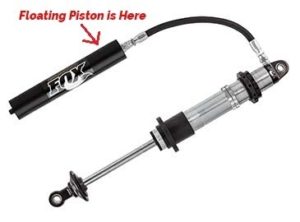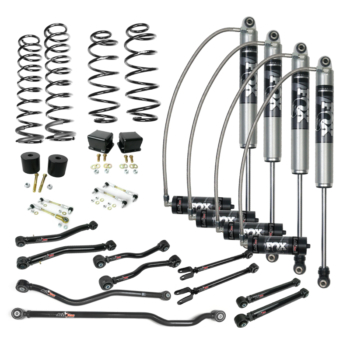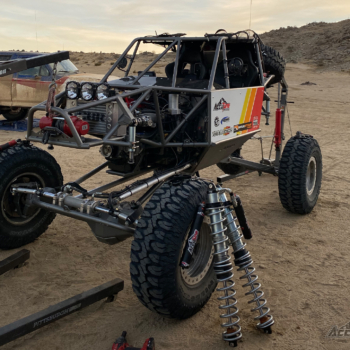A brief review of shock design hierarchy needs to be included to paint a complete picture, emulsion monotube shocks are far superior to twin tube shocks in comfort, performance and durability due to their larger pistons, gas charge, and superior construction.
When people hear Remote Reservoir they immediately think heat dissipation, but that’s not the whole reason Remote Reservoir shocks are superior to Emulsion shocks.
One of the biggest advantages of remote reservoirs are the lower operating pressures due to a reduction in gas pressure build up. All shocks are a bit like an air shock where the piston rod displaces significant volume and causes a change in gas pressure. For an emulsion shock this can be a substantial change and some 2.0 emulsion shocks can build up to 600 psi.
The increasing and difficult to predict gas pressure causes problems:
- Harder to select springs – pressure acts like a spring and lifts vehicle making it harder to calculate initial rates
- Can cause harshness – progressive spring rate adds hard to predict force which could cause harshness (Fox standard compression valving is softer for emulsion shocks for a reason)
- More harshness – high gas pressure causes MUCH more friction which causes harshness
- Less durability – all that pressure is rough on seals which are now clamping on the piston rod with 3x the pressure
Comment on this article or ask for more like it here.
Related Products
No products found which match your selection.










Leave a Reply
Want to join the discussion?Feel free to contribute!